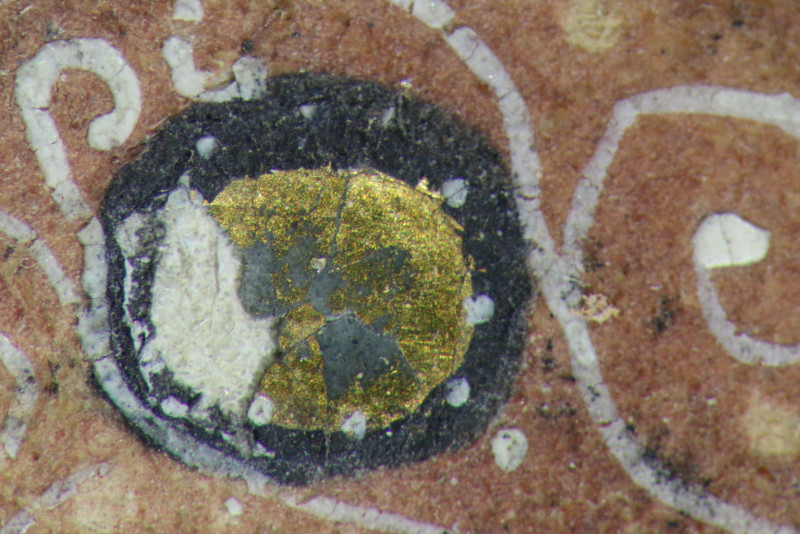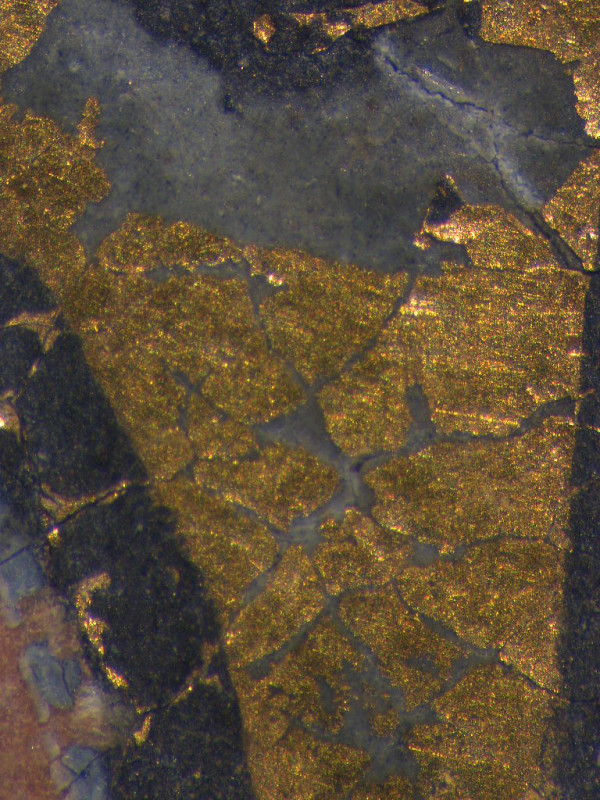Grey and brown mixtures
Artists' Techniques
The artist used a range of mixtures to create varied shades of grey. A pale grey consisting of lead white with traces of a copper-based compound, likely azurite, is used to paint the rabbit. A darker grey created by adding vermilion to the mixture is used for the darker rabbit and the grey stag and its pair in lower margin. A blend of lead white, traces of azurite and vermilion, and the further addition of an earth pigment, is used to create the brown pelts of the stags and does in the lower margin, while two more grey mixtures are found in the ox (lead white, with traces of azurite and possibly indigo), and in the figure of the huntsman (lead white and ultramarine, likely ash) (hotspot 4).







Illuminated initial [E] with full inhabited border
This parade of animals includes many of the creatures that would have been included within Roger de Pilkington’s grant and acts as a pictorial record of his newly affirmed rights. It also promotes his family identity by including a squirrel perched on a tree in the right hand margin, a motif that he used as a crest on his personal seal. The gold of the initial and bar border is laid on a grey ground (hotspot 1), while the blue is a strong undiluted azurite, and the pink is an organic dye. Azurite reappears in the body of the splendid peacock, but here it is overpainted by a mixture of indigo and vermilion (now very darkened) to mimic the iridescence of the plumage (hotspot 2). The same pink dye mixed with lead white is used to create the rose coloured breast of the jay. Gold leaf is used on the peacock’s tail, now applied directly onto the parchment (hotspot 3); adjacently, his wing is painted in mosaic gold, which is also used for the yellow plumage of the peahen. The green of the trees and foliage is uniformly verdigris, while the dominant colours for depicting the fauna – grey and brown – are created by a range of mixtures. The huntsman's clothing is painted in a mixture of lead white and ultramarine, probably ash (hotspot 4).